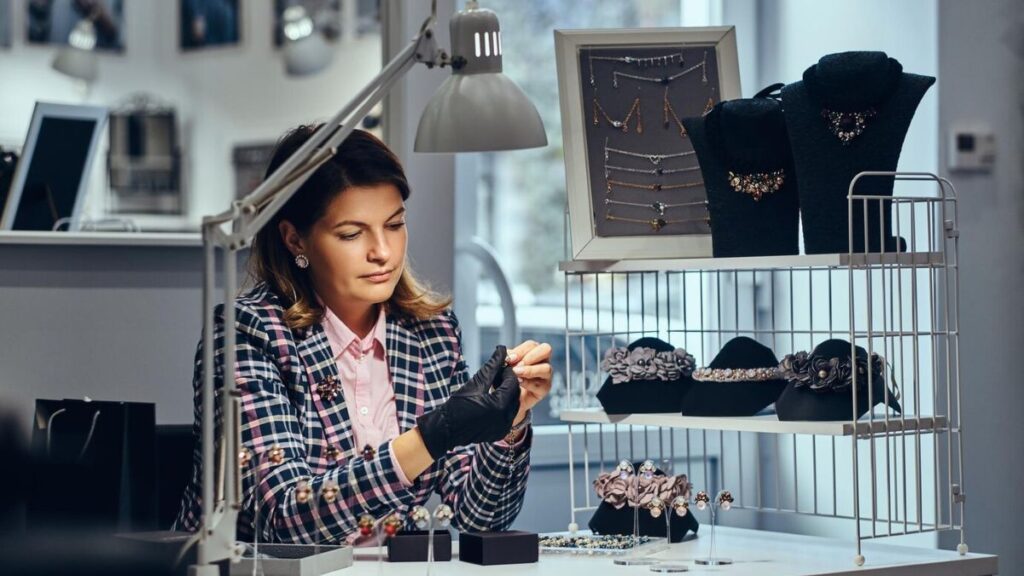Introduction: The Silent Language of Adornment
Jewelry has never been just about aesthetics. From ancient talismans to modern heirlooms, every piece whispers a story—sometimes a confession, a declaration, or even a rebellion. Hello Adorn isn’t just a greeting; it’s an acknowledgment of jewelry as a dialect of its own, one that transcends spoken language.
This is the art of jewelry that speaks without words.
In this deep dive, we explore how jewelry communicates identity, status, love, and legacy. We’ll traverse history, decode symbolism, and examine how contemporary designers are reinventing this silent language for the digital age.
Chapter 1: The Historical Lexicon of Jewelry
1.1 Ancient Symbols: More Than Decoration
Long before emojis, there were amulets.
- Egyptian Scarabs – Symbols of rebirth, carved into rings and pendants to guide souls in the afterlife.
- Roman Bullae – Worn by boys as protective charms until adulthood, then ceremonially discarded.
- Victorian Mourning Jewelry – Embedded with hair and black gemstones, these pieces were wearable grief.
Jewelry wasn’t just worn—it was read.
1.2 Power & Politics: The Unspoken Hierarchy
A crown isn’t just a hat. A signet ring isn’t just a stamp.
- Medieval Europe – Sumptuary laws dictated who could wear gold, pearls, or certain gemstones. Your jewelry was your résumé.
- Indian Kundan – Mughal emperors used gem-encrusted jewelry to project divine authority.
- Modern CEOs – The “power watch” (Patek Philippe, Rolex) silently signals influence.
Jewelry has always been a tool of control—both worn and imposed.
Chapter 2: The Emotional Grammar of Jewelry
2.1 Love & Commitment: Beyond the Diamond
Engagement rings are just the beginning.
- Claddagh Rings (Irish) – Heart (love), hands (friendship), crown (loyalty). Position matters: heart facing in (taken), out (single).
- Mizpah Pendants – “The Lord watch between me and thee when we are absent one from another.” A 19th-century long-distance love token.
- Contemporary Twist – Lab-grown diamonds and tattooed wedding bands for the anti-traditionalist.
2.2 Rebellion & Identity: Wearing Your Convictions
Jewelry as protest.
- Suffragette Jewelry – Purple (dignity), white (purity), green (hope) stones in Edwardian brooches.
- Punk Safety Pins – Originally utilitarian, now a badge of anti-establishment ethos.
Chapter 3: The Modern Syntax of Jewelry Design
3.1 The Rise of “Conversation Pieces”
Jewelry that demands dialogue.
- Van Cleef & Alhambra – The four-leaf clover isn’t just luck; it’s a status marker.
- JAR’s Butterflies – Joel Arthur Rosenthal’s designs aren’t worn—they’re experienced.
- Bottega Veneta’s Knot – A sleek, no-logo statement for the quiet luxury crowd.
3.2 Tech-Infused Adornment
When jewelry goes digital.
- Ringly (2014-2018) – A smart ring that buzzed for notifications. A failed experiment, but a sign of things to come.
- NFT Jewelry – Digital ownership meets physical wearables (see: CryptoPunks pendants).
- 3D-Printed Customization – Bespoke designs that fit like a fingerprint.
Chapter 4: The Future of Jewelry’s Silent Speech
4.1 Sustainability as a Statement
Ethics embedded in design.
- Recycled Gold – No longer a niche, but a necessity.
- Lab-Grown Gems – Identical to mined stones, minus the environmental toll.
- “Heirloom Upcycling” – Old diamonds reset in modern designs.
4.2 AI & Personalization
Jewelry that learns you.
- Algorithmic Design – AI suggests pieces based on your social media aesthetic.
- Biometric Rings – Oura tracks sleep, but future versions may adjust designs based on mood.
Conclusion: The Last Word (Without Saying a Word)
Hello Adorn Jewelry is the original social media—a curated exhibition of self, worn on the body. Whether it’s a family signet, a silicone wedding band, or a blockchain-linked NFT necklace, every piece speaks.
The question is: What will yours say?
Final Thought
In a world oversaturated with words, perhaps the most profound statements are the ones we wear.
Hello Adorn isn’t just jewelry—it’s a conversation waiting to happen.






